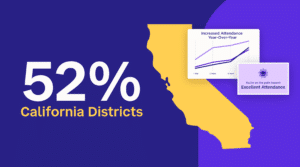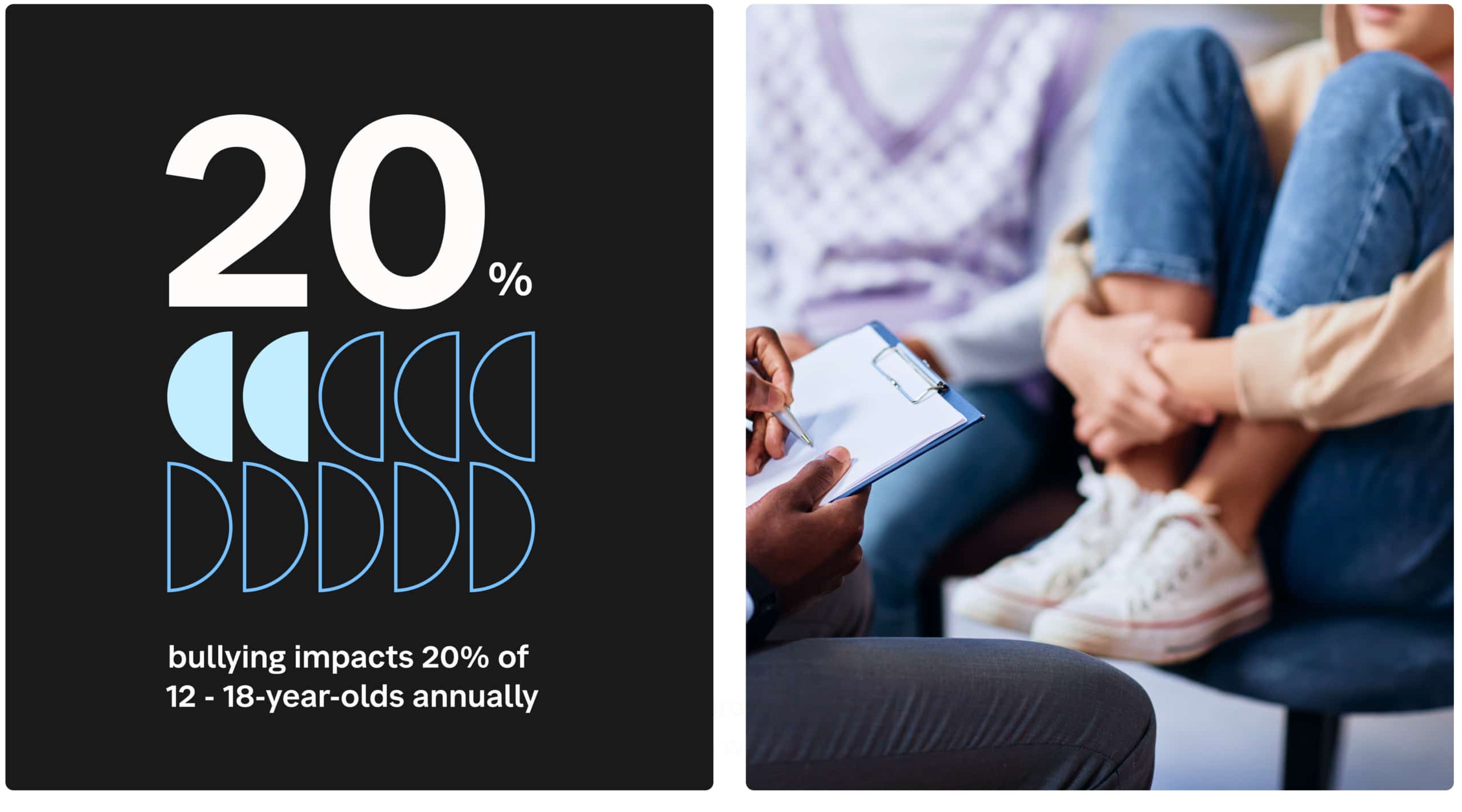
Featured Resource
Why Over Half of California School Districts Trust SchoolStatus
Read More >Join Mission: Attendance to reduce chronic absenteeism in 2025-26! >> Learn How <<





There is extensive research and literature on the topic of bullying. To help address the current trends, we review some facts and share effective practices based on peer-reviewed studies.
With bullying impacting 20% of 12 to 18-year-olds annually––and the alarming rise in cyberbullying in recent years––the detrimental impact on student absenteeism and teacher turnover call for some in-depth attention. In light of these trends, tracking absenteeism in tandem with providing ongoing educator training and family outreach can shed light on bullying in schools to allow us to find solutions together. With SchoolStatus’ tools for tracking attendance and connecting with families directly can offer support and help mitigate the impacts of bullying.

The American Psychological Association defines bullying as a form of aggressive behavior in which someone intentionally and repeatedly causes another injury or discomfort. Cyberbullying extends threatening or harassing behavior via electronic technology like cell phones, social media, or text messaging. In fact, incidents of cyberbullying among 12 to 18-year-olds have doubled in the past decade. The National Center for Education Statistics reports that approximately one in five 12 to 18-year-olds experience bullying every year. A review published in The Journal of Research on Adolescence states that bullying is a “pervasive global problem that has attracted researchers’ attention for five decades” and remains a challenge today.
Bullying is associated with a host of negative outcomes for perpetrators, victims, and witnesses. Considered a social phenomenon, bullying often takes place in front of several witnesses. The most commonly observed response to bullying is avoidance.
Being a victim of bullying––whether in person or online––is also associated with reasons for skipping school. The CDC reports that students who experienced both in-person and electronic bullying were “5 and 6 times more likely to miss school due to safety concerns” compared to non-bullied students. On average, about 15% of victimized students skip at least one day of school and report safety concerns as the main reason for their absence.

In a study of children’s perceptions of effective strategies against bullying, assertiveness was “the most frequently chosen intervention strategy.” Still, bullying victims reported a preference for witness retaliation on their behalf. Importantly, decades of research indicate that bystander intervention is unlikely, and even rare. Many reasons explain avoidant bystander behavior, including feeling a lack of self-efficacy, empathy, and responsibility. Self-efficacy refers to the feeling that one can successfully handle a situation. Proponents of resilience and self-efficacy programs argue that “skills-based approaches teach students to solve problems” they are likely to encounter throughout their lifetime.
Though self-efficacy is an intrapersonal construct, evidence suggests school and classroom norms can impact perceptions of self-efficacy, and the likelihood that bystanders will respond when witnessing bullying. Adolescents may be particularly responsive to highly influential peers’ norm-setting behavior due to neural activation at this stage of development. Blötner and Bergold’s research on social influence and bullying found that classroom characteristics were less influential on cyberbullying compared to traditional bullying.
Self-efficacy impacts educators as well. Waasdorp and colleagues found that having an anti-bullying policy wasn’t associated with staff intervention when witnessing bullying. However, staff were more likely to respond to bullying when they had received training on bullying policies and felt they had the resources to adequately diffuse a situation.
Training on bullying, when effective, may even serve as a teacher retention strategy. As many as 20%–75% of teachers report being victimized themselves over 2 years. Teacher victimization is associated with burnout and feelings of exhaustion. Importantly, repeated victimization of teachers––whether by physical or verbal assault––predicts teacher turnover. This turnover even goes so far to result in leaving the profession altogether. Among those who exited the profession, roughly half indicated that the indifference of administrators and lack of effective interventions played a key role in their decision.
Effectiveness studies indicate that multiple, long-term strategies are more impactful than lone, short-term interventions. Sanna Herkama and authors stated, “Importantly, empirical studies have pointed out that program effects tend to be stronger the longer a particular program has been implemented.” Christina Salmivalli and colleagues caution that limited research exists on age group differences, and note that one-size-fits-all interventions are not likely to have the same effect for elementary, middle, and high school students. However, their review of the literature says that providing information to guardians and informal peer involvement––such as group discussion about bullying attitudes––was most effective at reducing rates of both bullying and victimization.
In summary, the literature on this topic underscores the alarming rise in cyberbullying in recent years as well as the detrimental impact on victims––including student absenteeism and teacher turnover. Educator training on bullying policies and practices promotes safer environments and also contributes to teacher retention. In light of these trends, tracking absenteeism in tandem with discipline events might shed light on bullying in your classroom or school. When creating policies, address cyberbullying directly and provide ongoing educator training. Studies indicate that long-term intervention programs that emphasize resilience, self-efficacy, and prosocial norms can mitigate the impact of bullying.
 Dr. Joy Smithson
Dr. Joy SmithsonData Scientist
Dr. Joy Smithson is a data scientist at SchoolStatus, where she works with districts all over the country to help educators use data to inform decisions and support student success. Dr. Smithson sees her role as a dual mission: first, understanding educators' pressing research questions, and second, translating vast datasets into actionable insights to address those queries. While her social sciences background once made her feel like an outsider in education, she now leverages her expertise in analyzing, interpreting, summarizing, visualizing, and wrangling data to support educators. Outside work, Dr. Smithson embraces trail running and relishing the exploration of new cities at dawn.
News, articles, and tips for meeting your district’s goals—delivered to your inbox.






Ready to learn more about our suite of solutions?
